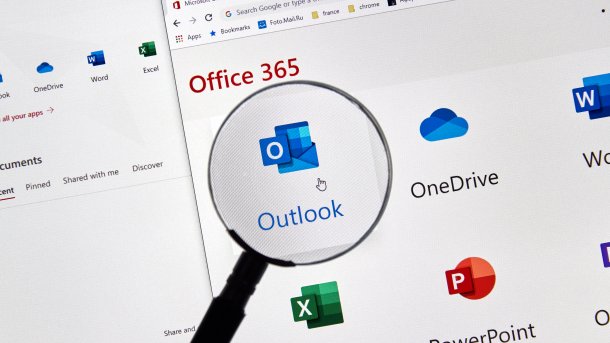New Outlook: Return to classic Outlook to be less simple
Microsoft offers a button to test the new Outlook in the title bar of the app. The way back should be a little less easy.

(Image: dennizn / Shutterstock)
Microsoft wants to replace the classic Outlook with a Progressive Web App (PWA) with the same name. Apparently, the next steps are on the way: After testing the new version, which can be activated by a switch in the title bar, this switch is to move to the menus in the new Outlook app to return.
(Image: Screenshot / dmk)
So far, there have only been rumors that Microsoft is planning to move the button to the top right of the title bar in the new Outlook. Instead of being directly in the Outlook user's field of vision, it will be moved to the Outlook settings, where it can be found under "General" - "About Outlook".
(Image: Screenshot / dmk)
As Microsoft wants to encourage people to switch to the new Outlook app, this is an expected step. After all, it is still possible to switch back, just somewhat hidden compared to the previously obvious switch.
The company was unable to immediately respond to a request from Microsoft for further details such as a timetable for this change. We will update this report as soon as we receive an answer.
New Outlook: Web app that transfers access data to servers
The new Outlook has been criticized because it no longer maintains local mailboxes in the form of PST files, for example, and can no longer use them at all, but instead processes and processes emails on Microsoft's cloud server. Anyone accessing IMAP accounts with the new Outlook, for example, transfers the access data to Microsoft's servers, which then collect the mails for the users from the actual providers and store them on the Microsoft servers. On the server side, additional AI-based functions are then available that cannot be used in a local version of Outlook.
Videos by heise
Anyone who already uses online Exchange, outlook.com or hotmail.com will store their data with Microsoft anyway. However, not everyone will be happy to outsource their own access data and emails from all accounts to Microsoft's cloud. In the business environment, this can be problematic due to the GDPR, for example, if employees can simply change the mail program themselves by tapping a button in the title bar and thus change the storage location of the data.
Microsoft is continuing to implement its plan to replace the old Mail, Calendar and Contacts apps in Windows with the new Outlook from the start of 2024. At the end of February, the first major wave of end customers saw the new Outlook instead of the expected mail program. When starting the apps, a short splash screen appears announcing the move. Business customers are to be migrated to the new Outlook app in 2025.
(dmk)